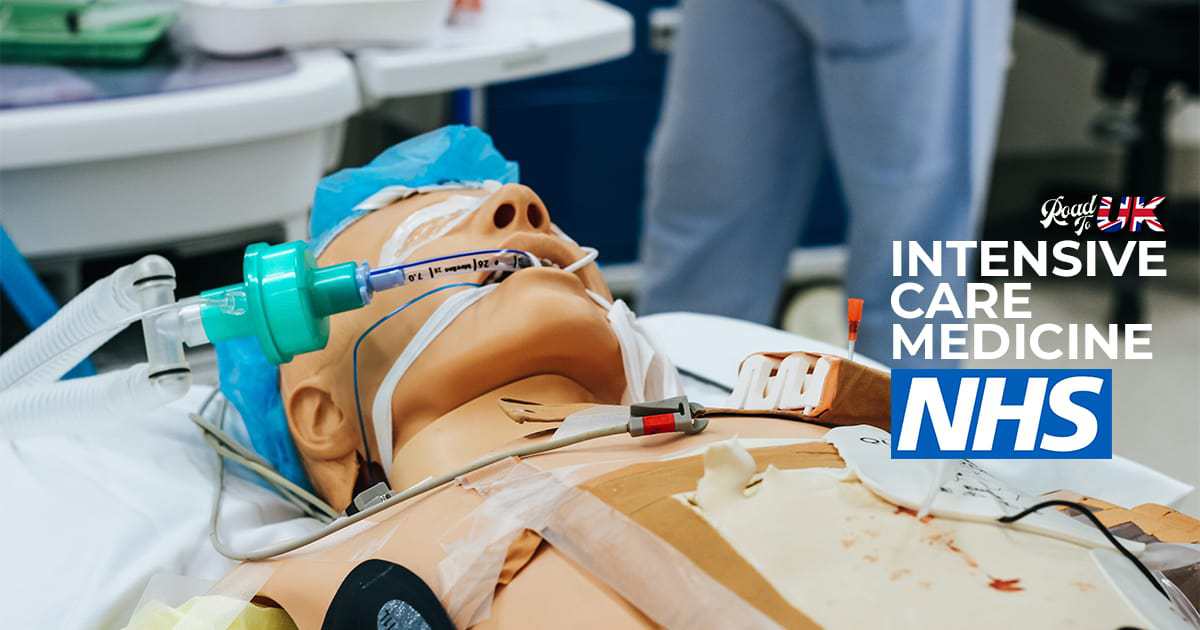Working in Intensive Care Unit (ICU) in the NHS

When you think about working in the Intensive Care Unit (ICU) (that too in the NHS!), you may naturally feel some apprehension. You’re looking to deal with the patients who have been deemed the sickest in the hospital. They will be receiving different types of support in order to keep them stable- it could be blood pressure, ventilatory, sedation, etc.
What can you expect?
Patients in ICU require a high level of care and observation. These are patients who are considered to be well enough/independent when not in the hospital to the point that ICU care is appropriate. There should also be something that ICU is offering that cannot be given on the ward (ex: administration of potassium via a central line, intubation and ventilation, etc).
Daily Tasks on the ICU as a junior doctor in the NHS
You may feel like a small fish in a large pond when you’re in ICU simply because everything is so specialized. You’ll be working with foundation doctors, internal medicine trainees, core anaesthetic trainees, and ACCS trainees, which affords you the opportunity to really get a feel of how different specialities work together to support a major lifeline of a hospital.
Because of the many routes by which you can enter into ICU training, the consultants are also from a variety of backgrounds, which allows for a greater learning experience. You may also hear many phrases and acronyms you’re not familiar with, so let’s start with something you’ll hear quite often: the level of care.
- Level 0: these patients can be managed on a normal non-intensive ward without a problem
- Level 1: these patients are not as stable as level 0 and may deteriorate. they are still stable enough for a ward, but may need more support and potentially even input from the acute care team.
- Level 2: these patients require some form of single-organ support and are not fit for a ward. they require more observation and care versus the lower levels.
- Level 3: these are significantly more complex patients versus the lower levels, and may be needing support of two or more organs, as well as ventilatory support (ex: intubation)
You will find that level 2 and 3 patients are ICU bound, but when they’re better, they can be ‘stepped down’ on ICU to level 1 or 0, making them ready for discharge or the ward.
You may often also hear the terms ‘ROTEM’ or ‘CAM-ICU’ being thrown around. ROTEM stands for rotational thromboelastometry. It gives a quick assessment of clot development and basically will tell you if a patient’s body is able to make a clot, check how strong the clot is, and see if there is any fibrinolysis.
CAM-ICU (Confusion Assessment Method) helps you to understand and monitor a patient who may be becoming delirious. This must be undertaken in a setting where there is an acute (new) change in a patient’s mental baseline, so it should not be undertaken if you are unaware of the patient’s baseline.
An important part of intensive care (ICU) in the NHS is maintaining continuity, which can often be difficult if you are not the same person seeing the patient every day. This makes handover extremely important, so you should strive to ensure that all tasks that are not completed are efficiently handed over to your colleagues at the end of your shift. Remember to use SBAR:

Skills You Can Sharpen in Intensive Care Unit (ICU) in NHS
ICU affords you the opportunity to learn how to do a lot of procedures, such as (but not limited to):
- Arterial line insertion
- Central line insertion
- PICC / midline insertions
- Intubation
- Ultrasound guided cannulations.
You should try as much as possible to be involved in these tasks, even if you have no background in ever performing them. There are many things you can learn how to do in Intensive care (ICU) in NHS that you’d be able to continue to use outside of it.
You will also be a part of the airway management team during a cardiac arrest. This means that you will need to know how to deal with a patient’s airway during an arrest call. You will already be familiar with the devices used to maintain an airway thanks to the ALS course you’ve completed, but oftentimes the department will do a refresher course before you start as part of your induction.
Intubation and Ventilation on ICU
While you may not necessarily spend your first few days on ICU intubating patients, there are some phrases you need to be familiar with regarding patients who have been intubated, and you will most definitely need to at least understand the foundation of ventilating intubated patients. Let’s first discuss intubation grades:
- Grade 1: the full and complete glottis can be visualized
- Grade 2: the anterior part of the glottis is not seen
- Grade 3: the epiglottis is visualized, but not the glottis
- Grade 4: the epiglottis is not seen
As you can imagine, knowing the grade of intubation is important when you take care of a patient as it lets you know how difficult a potential re-intubation could be. Difficult intubations are often done by registrars or consultants, but that doesn’t mean you can’t observe!
Now let’s discuss ventilation. If a patient is intubated, they will not be able to breathe on their own. Depending on what their arterial blood gas shows, they will need to be put on an appropriate type of ventilation. So let’s break it down:
- SIMV- Synchronized Intermittent-Mandatory Ventilation. The patient is essentially is breathing on their own but the machine provides mandatory breaths with spontaneous respiration.
- CPAP- Continuous Positive Airway Pressure. As the name implies, positive pressure is provided throughout the cycle.
- ASB- Assisted Spontaneous Breathing. It synchronizes with a patient’s spontaneous breathing.

Another important thing to understand when we discuss ventilation is PEEP. You may hear the term tossed around a lot on ICU- adjust the PEEP. It is the positive end-expiratory pressure, and it’s the pressure in the lungs that remains after expiration.
Lastly, I just want to make a quick mention of proning a patient who is not ventilating well. Occasionally despite our best efforts and aggressive treatment, a patient is still struggling to ventilate well. There is some science of improved oxygenation when a patient is laid onto their chest versus their back due to the redistribution of pulmonary flow.
Common Cases on ICU
You may wonder as to what type of patients you could find in ICU. Depending on how big your hospital is, you may just have general medicine (adult) ICU patients, a general and neuro ICU, or even a general, neuro, and pediatric ICU. Whatever the scenario, you should be prepared to understand all aspects of care. Here are a few typical admissions:
- Sepsis
- Shock
- Brain hemorrhage
- Polytrauma/Traumatic brain injury
- Post-operative care (surgical cases can be anything from abdominal, ENT, brain, etc)
- Myocardial infarction/cardiac arrest
How can I work as a consultant in Intensive Care in the UK?
So remember how we mentioned earlier that you are surrounded by doctors of different backgrounds in ICU? Because of this, you will find that there are different titles given to the consultants based on their training. For instance, if an individual has trained to work in intensive care medicine (ICM) via internal medicine training, they would also be known as an intensivist when they become an ICU consultant. However, if someone were to take another route, say via anaesthesia, they would also be an anesthesiologist/anaesthetist. Let’s break down the routes by which you can enter ICM training:
There is no core level of training for intensive care medicine (making it an UNCOUPLED speciality), rather you can complete one of the routes mentioned above and join at ST3 level. As you can guess from the above routes of entry, you will need to complete ANY of the following exams (whichever is related to the programme that you took) to be eligible to enter ICM training.
- FRCA (Primary)
- MRCP UK (Full)
- FRCEM Primary (or MRCEM Part A after August 2012) AND FRCEM Intermediate SAQ (or MRCEM Part B after August 2012) AND FRCEM Intermediate SJP OR MRCEM obtained prior to August 2018
For detailed official information please visit Faculty of Intensive Care Medicine (FICM) webiste
A rotation in ICU is now mandatory as a part of Internal Medicine Training, so if you want to be an intensivist, things have gotten much easier to pursue.
If you have any other concerns about starting your new job, don’t hesitate to check out Your First Day on the Job as well as Role of a Junior Doctor in the NHS.

